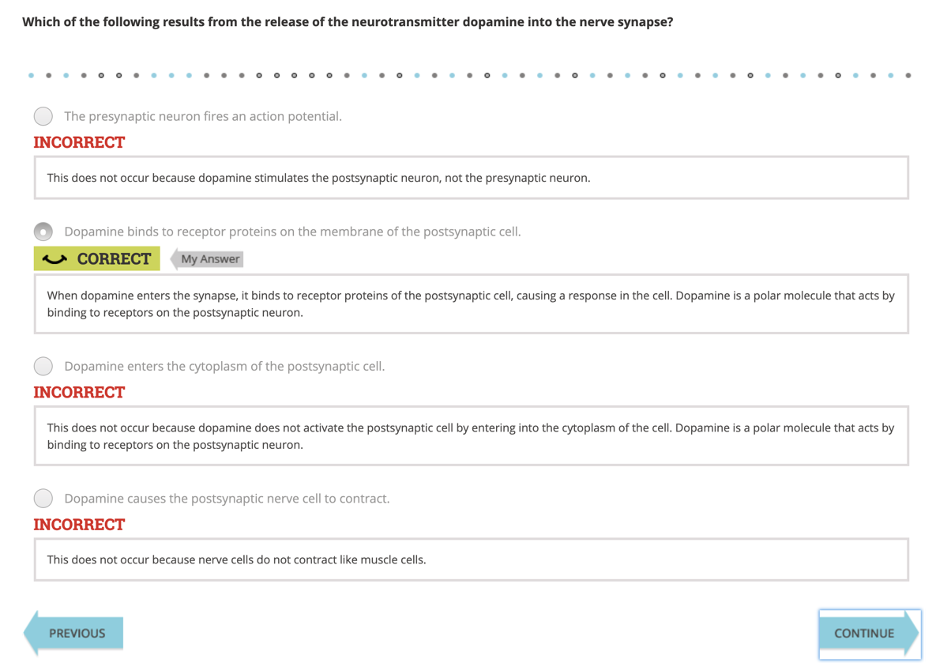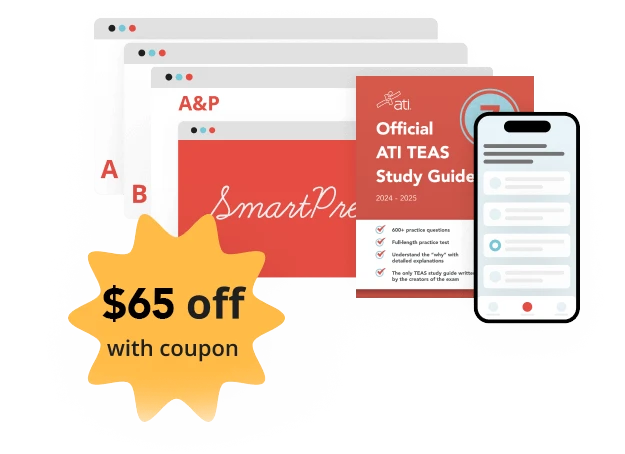Sample Questions on the ATI TEAS, Version 7 Exam
Up to 15% of the ATI TEAS, Version 7 questions will be alternate item questions. For more information on the format of the ATI TEAS, Version 7, follow this link.
All our ATI TEAS prep is aligned to the ATI TEAS, Version 7, and provides alternate item type questions for practice. For the best practice for these questions, we suggest the ATI TEAS Online Practice Assessments.
Multiple Select also known as Select All That Apply:
Students will be presented with a list of four or more answers and more than 1 answer may be correct. There will be a directional note at the end of these questions to “select all that apply”. To answer the question correctly, students must select all correct answers. If all correct answers are not selected, then the question is incorrect. No partial credit is given.
Question Example:
Which of the following are examples of prewriting? (Select all that apply.)
- Drawing a mind-map on growing indoor plants
- Freewriting about one’s childhood memories
- Exchanging drafts with colleagues to do a peer review
- Preparing an essay outline on the topic of consumer awareness
- Including citations for the content integrated from multiple sources
Correct Answers: A, B, and D
1. Drawing a mind-map on growing indoor plants
This is correct as this comes under pre-writing
2. Freewriting about one’s childhood memories
This is correct as it comes under pre-writing
3. Exchanging drafts with colleagues to do a peer review
This is incorrect as this would be done after the actual writing
4. Preparing an essay outline on the topic of consumer awareness
This is correct as this would come under pre-writing
5. Including citations for the content integrated from multiple sources
Incorrect as this is usually done after preparing a draft
Visual Representation:
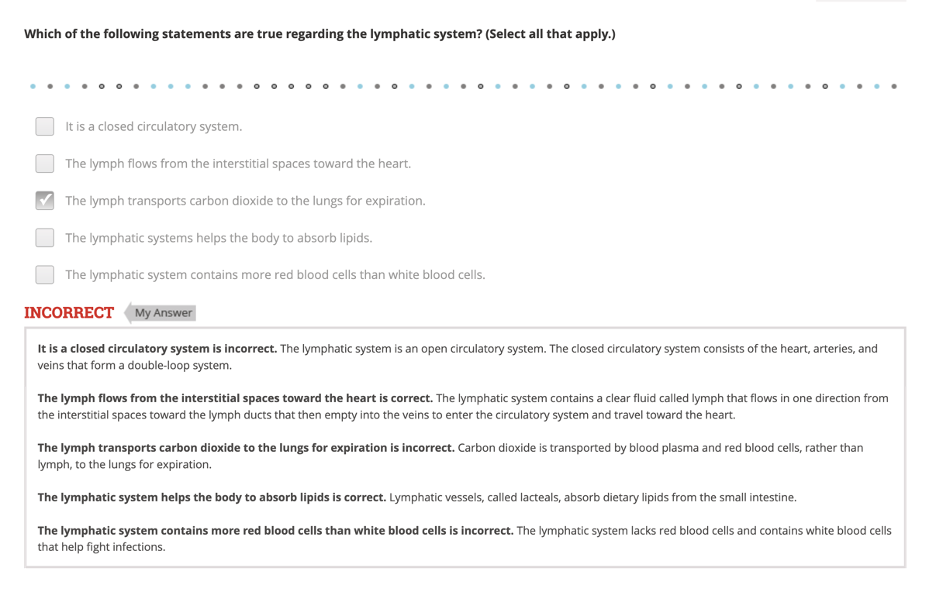
Fill in the blank
This question type requires students to provide the answer to the question or “fill in the blank” without a set of answer options. Answers may be text or numerical values.
What is the decimal equivalent of 103%? (Use a leading zero if it applies. Do not use a trailing zero.)
Answer: 1.03
To find the decimal equivalent of a percent, the number should be divided by 100, and the percent symbol should be removed.
Visual representation:
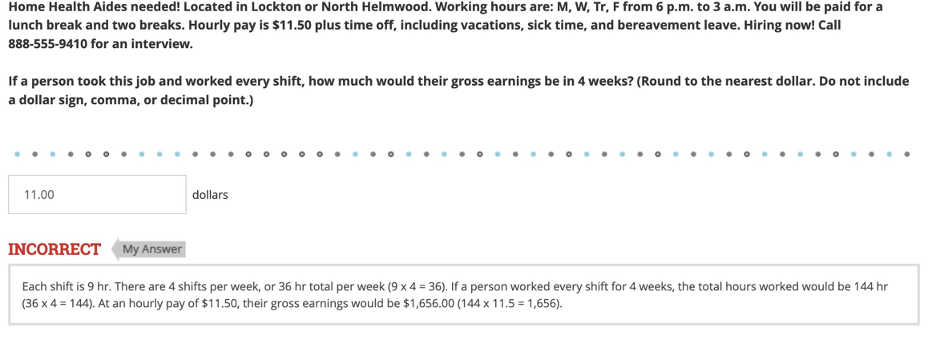
Ordered Response Questions:
These questions require students to place a set of response options in the correct order. Students drag between four and six response options from a box on the left to an empty box on the right. The question is answered correctly only if the student places all the correct options in the correct order within the box on the right. If an option is out of order, then the question is incorrect. No partial credit will be given.
The steps required to balance an equation are listed below, but not necessarily in the correct sequence.
- If the numbers of atoms are not equal, multiply the coefficients of reactant or product molecules with the suitable number until the number of atoms balances out.
- Check your work by recounting the number of atoms on both sides of the arrow.
- Count the number of atoms of each element on both sides of the arrow.
Which of the following is the correct sequence of steps for balancing the chemical equation?
- 1,2,3
- 3,1,2
- 3,2,1
- 2,3,1
Correct Answer: B – 3,1,2
To balance the chemical equation, first count the number of atoms, which starts in step 3. Then multiply the coefficients of reactants or products to balance the equation; and the last step is recounting for the final check, so the correct sequence is 3,1,2.
Visual Example of an Ordered Response Question:
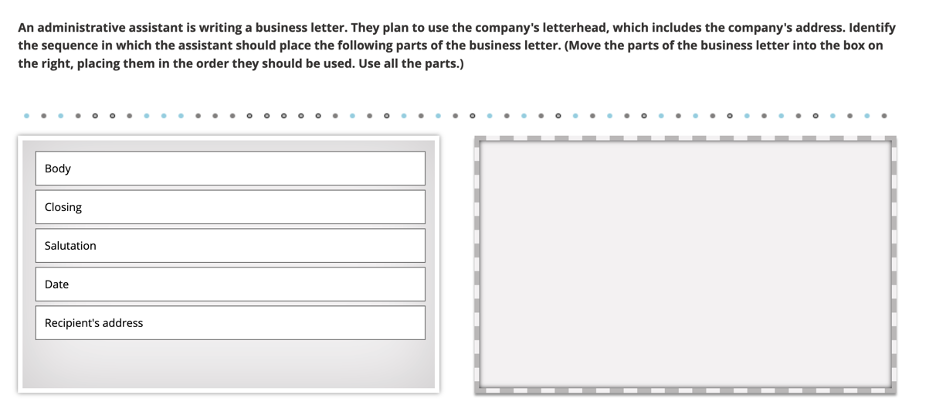
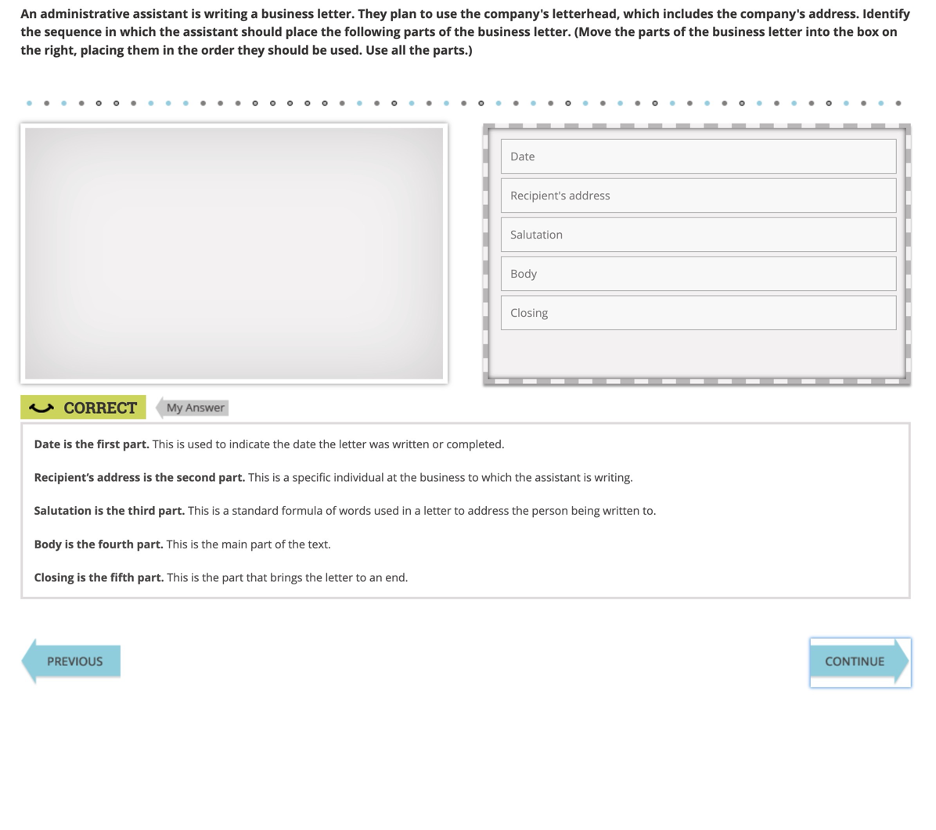
Hot Spot
These questions include an image with two to five clickable areas. Students are required to click on the area of the image identified as the correct answer.
A student is numbering the points of a pentagon from 1 to 5. They designate the top point as point number 1 and continue clockwise. Which of the following should the student designate as point number 3? (You will find hot spots to select in the artwork below. Select only the hot spot that corresponds to your answer.)
Correct Answer: Pointing to area D
The meaning of CLOCKWISE is in the direction in which the hands of a clock rotate as viewed from in front or as if standing on a clock face.
Multiple Choice
Questions that have four answer options with only one option as the correct answer. In addition to text, some multiple-choice items include charts, exhibits, and graphics.
A state trooper collected and recorded speeds of several cars at a set location on a local highway. The speeds in miles per hour are recorded below. Which of the following is the median of this data set?
73, 81, 68, 75, 90, 78, 75, 82, 77, 71
- 77
- 22
- 75
- 76
Answer: D
This value represents the median of the data set. The median is the middle number when the data is ordered from least to greatest. Since this set has 10 values, it is the average of the 5th and 6th values.
- This number represents the mean of the data set. The mean represents the average of the data or the sum of all of the values divided by the number of values.
- This number represents the range of the data set. The range is the spread of data, or the difference between the highest and lowest values.
- This number represents the mode of the data set. The mode represents the most often occurring value in the set.
Visual representation of multiple choice:
